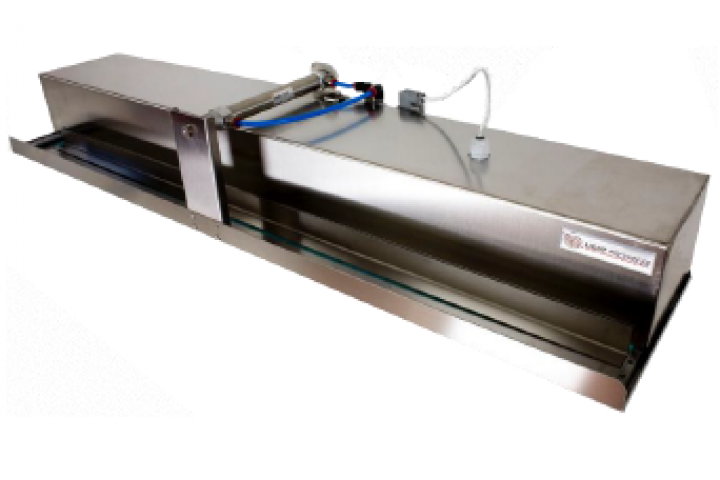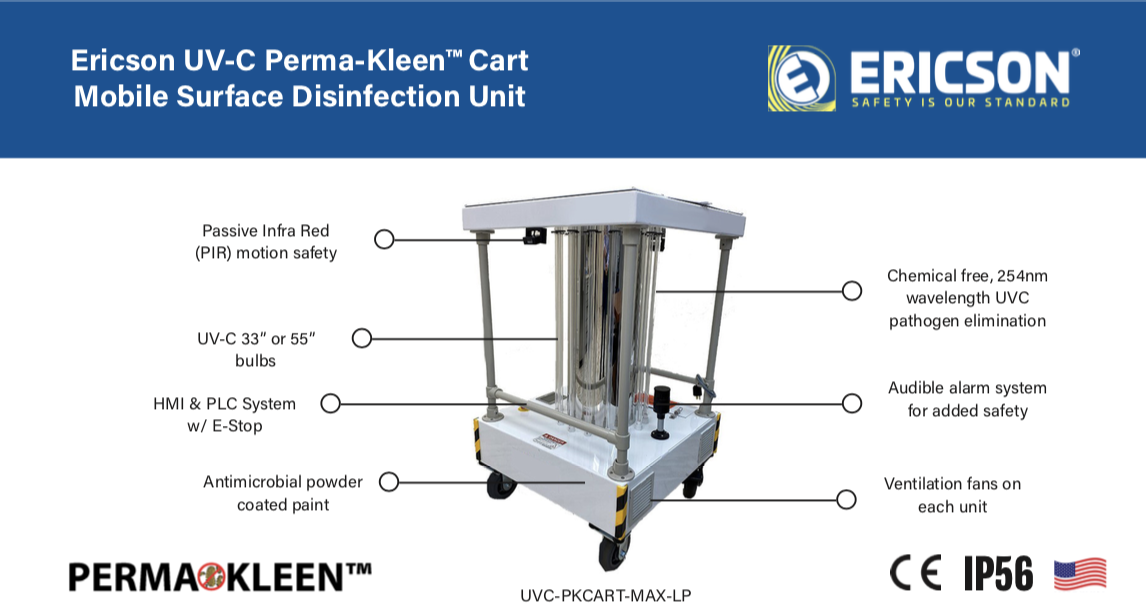Harnessing the Possible of UV Disinfection: Shielding Health And Wellness and Health
As the world comes to grips with the continuous pandemic and the constant risk of transmittable diseases, the relevance of keeping health and wellness and hygiene has actually never ever been a lot more apparent. In this context, utilizing the capacity of UV disinfection becomes an appealing remedy. UV disinfection, a modern technology extensively used in different markets, has actually verified efficient in removing damaging pathogens. There is much more to check out behind the science of UV disinfection and its applications. From understanding the systems at play to applying this innovation in our day-to-days live, this discussion aims to clarify the possibility of UV disinfection and its duty in safeguarding our health and hygiene.
Recognizing UV Sanitation
UV disinfection is an extremely reliable and widely utilized technique for making certain and eliminating damaging virus wellness and health. This technique utilizes ultraviolet (UV) light to suspend bacteria by harming their DNA and avoiding them from reproducing. UV sanitation is particularly effective versus bacteria, viruses, and other microorganisms that can create conditions and infections.
The principle behind UV sanitation is simple yet effective. UV sanitation can be applied in numerous settings, including water treatment plants, health care facilities, food handling industries, and air purification systems.
Among the advantages of UV sanitation is its capacity to efficiently and efficiently eliminate a wide array of microorganisms without the requirement for additives or chemicals. Unlike various other sanitation techniques, such as chlorine or ozone, UV sanitation does not introduce damaging byproducts or chemical deposits into the atmosphere. Additionally, UV disinfection is a non-contact process, which indicates that it does not call for physical contact with the bacteria, lessening the risk of cross-contamination.

The Science Behind UV Sanitation
The performance of UV sanitation depends on its capability to interfere with the genetic product of bacteria, providing them incapable to duplicate and therefore removing their unsafe capacity. UV, or ultraviolet, radiation is a kind of electromagnetic radiation with wavelengths much shorter than visible light. It is categorized into 3 types: UV-B, uv-a, and uv-c. UV-C radiation, particularly, has the fastest wavelength and the greatest power. Due to the fact that it can pass through the cell wall surfaces of bacteria and damage their DNA or RNA., this high-energy UV-C radiation is most effective in sanitation applications.
When microbes are subjected to UV-C radiation, the energy is taken in by their hereditary material, causing bonds to damage and creating chemical reactions that disrupt their capability to reproduce. This avoids the microbes from reproducing and spreading out infection. UV disinfection is particularly reliable against infections, fungis, and bacteria, consisting of common pathogens such as Escherichia coli, Salmonella, and Influenza.
The science behind UV disinfection is supported by comprehensive research and research studies. It has actually been shown that exposure to an adequate dosage of UV-C radiation can achieve a high degree of disinfection, frequently surpassing 99.9% effectiveness in killing bacteria. However, it is very important to note that the performance of UV sanitation relies on various factors, consisting of the intensity of UV-C radiation, exposure time, distance from the UV source, and the vulnerability of the microorganism to UV radiation.
Applications of UV Disinfection
Offered the comprehensive research study and effectiveness of UV sanitation in interrupting the hereditary product of bacteria, it is essential to discover the numerous useful applications of this technology. UV disinfection has actually confirmed to be an important device in a large range of markets where keeping a tidy and risk-free setting is vital.
One major application of UV sanitation remains in medical care setups. UV light can be made use of to decontaminate surfaces, tools, and also the air in medical facilities and medical facilities. This helps to reduce the danger of healthcare-associated infections and makes sure a more secure environment for people and medical care employees.
One more crucial application is in the food and drink market. UV disinfection is used to deal with water and remove hazardous microorganisms, such as E. coli and Salmonella, from the manufacturing procedure. uv surface disinfection. This guarantees the safety and quality of the products we consume
UV sanitation is likewise extensively made use of in water therapy plants and wastewater treatment centers. It is an efficient technique for destroying unsafe microorganisms, infections, and bloodsuckers that can be existing in water resources. This assists to offer safe and tidy drinking water to areas and shield the setting from contamination.
Furthermore, UV disinfection is employed in the pharmaceutical industry to disinfect devices and keep the honesty of products. It is also utilized in research laboratories and research study centers to stop contamination and make sure accurate outcomes.
Benefits of UV Sanitation Modern Technology
One noteworthy benefit of using UV disinfection modern technology is its capacity to properly eradicate bacteria without the use of rough chemicals. This is particularly helpful in various setups, such as healthcare facilities, water therapy plants, and food handling markets, where the visibility of unsafe virus poses a significant risk to public health and safety and site web security.
Unlike traditional disinfection approaches that depend on chemicals like chlorine or ozone, UV sanitation modern technology utilizes ultraviolet light to target and damage the DNA of bacteria, efficiently neutralizing their ability to reproduce and create infections. This procedure not only eliminates the need for possibly dangerous chemicals however likewise lowers the threat of chemical residue or byproducts remaining in the treated environment.

Additionally, UV disinfection innovation is ecologically pleasant. As it does not depend on the usage of chemicals, it eliminates the requirement for their disposal, manufacturing, and transport, reducing the general carbon impact linked with sanitation processes. In addition, UV disinfection systems have a longer life-span compared to chemical-based methods, resulting in much less regular substitute and more minimizing waste.
Carrying Out UV Disinfection in Life
To properly execute UV disinfection in every day life, people and organizations can incorporate portable UV sanitizing tools right into their hygiene regimens and cleaning methods. These gadgets are developed to give off ultraviolet light, which has been shown to kill or suspend a vast array of microbes, including viruses, fungi, and germs. By using portable UV sanitizing tools, individuals can sanitize generally touched surface areas and things, such as cell phones, laptops, secrets, and doorknobs, decreasing the danger of spreading out bacteria and infections.
Along with incorporating portable UV disinfecting tools, it is necessary to follow appropriate standards and suggestions for reliable UV disinfection. This consists of ensuring that the device is made use of correctly and for the suggested duration to accomplish ideal sanitation results. It is likewise important to prioritize safety and security procedures, such as wearing protective eyewear and preventing direct exposure of the UV light to the skin.

Furthermore, companies can carry out UV disinfection technology in numerous settings to boost hygiene techniques. Healthcare facilities and health care centers can utilize UV sanitation robots to sanitize person areas, running cinemas, and various other high-touch areas. Food processing industries can integrate UV disinfection systems right into their production lines to improve food safety and avoid contamination.
Conclusion
In conclusion, UV disinfection innovation holds great potential in safeguarding health and wellness and health. With its various benefits, UV disinfection is an important device for keeping a tidy and healthy and balanced environment.
Unlike various other disinfection techniques, such as chlorine or ozone, UV sanitation does not introduce hazardous byproducts or chemical residues into the setting. It is crucial to keep in mind that the efficiency of UV sanitation depends on numerous elements, consisting of the strength of UV-C radiation, exposure time, range from the UV resource, and the susceptibility of the microbe to UV radiation.
An additional benefit This Site of UV disinfection modern technology is its capacity to provide continual and quick sanitation. Unlike manual cleaning approaches, which can be taxing and require considerable labor, UV sanitation systems can be automated and run continually, making certain constant sanitation without human treatment.To properly execute UV sanitation in day-to-day life, individuals and organizations can incorporate portable UV disinfecting devices into their health regimens and cleaning up methods.